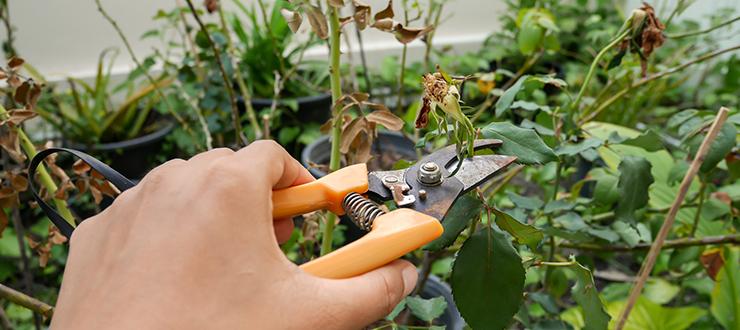
It may seem like fall is the ideal time to cut back your garden plants, and if you’re thinking of grass, vegetables and perennials, it is. But shrubs, on the other hand, benefit from a late-winter, early spring prune.
Why Prune in Late-Winter?
In temperate regions, most shrubs go dormant in the winter and halt their growth. Instead of pruning in the fall, when the plant may not be completely done growing, you want to prune at the end of winter or early spring before any new growth starts. The benefit being once spring comes, the plant will put all its energy towards producing new growth. It is also easier to prune your shrubs in the winter, as you can really see the shape of the plant with the leaves gone. Keep in mind, while a late-winter prune is ideal for most shrubs, those plants that bloom on old growth should be pruned after the flowers fade. Almanac.com shares some examples as to which is which. Shrubs that Should be Pruned in Late-Winter: These shrubs form flower buds on new wood or new growth: abelia, beautyberry, butterfly bush, summer- or fall-blooming clematis, smooth hydrangeas, panicle hydrangeas, potentilla, roses, rose of sharon, dogwoods, Japanese spirea, St. Johnswort, and summersweet. Shrubs that Should be Pruned Late-Spring or Summer: Wait until after the flowers fade to prune shrubs that bloom on old wood or the growth from the previous year. If you cut them too early, you’ll cut off the buds that would have bloomed this spring. These shrubs include: azalea, beautybush, bridalwreath spirea, spring-blooming clematis, cotoneaster, deutzia, enkianthus, flowering almond, forsythia, mophead hydrangeas, lilacs, mock orange, mountain laurel, ninebark, oakleaf hydrangea, pieris, rhododendron, viburnum, Virginia sweetspire, weigela, wisteria, and witch hazel.
Tips for Late-Winter Pruning
To get the most out of your late-winter pruning, follow these best practices.
- Don’t prune when it’s wet or bitter cold. Pruning on a mild, dry day helps prevent the spreading of waterborne plant diseases or damage from cold temperatures.
- Wait until the danger of below-freezing temperatures have passed. You don’t want your plant to keep growing, but you also don’t want freezing temps to damage or dry out the cuts left from pruning.
- Clear out dead and diseased branches first.
- Cut branches at the node, or the point at which one branch attaches to another.
While you’re pruning your shrubs, don’t forget to complete your arsenal by stocking up on Ragan & Massey herbicides, which will help keep the weeds in your flower beds and landscaping under control.
